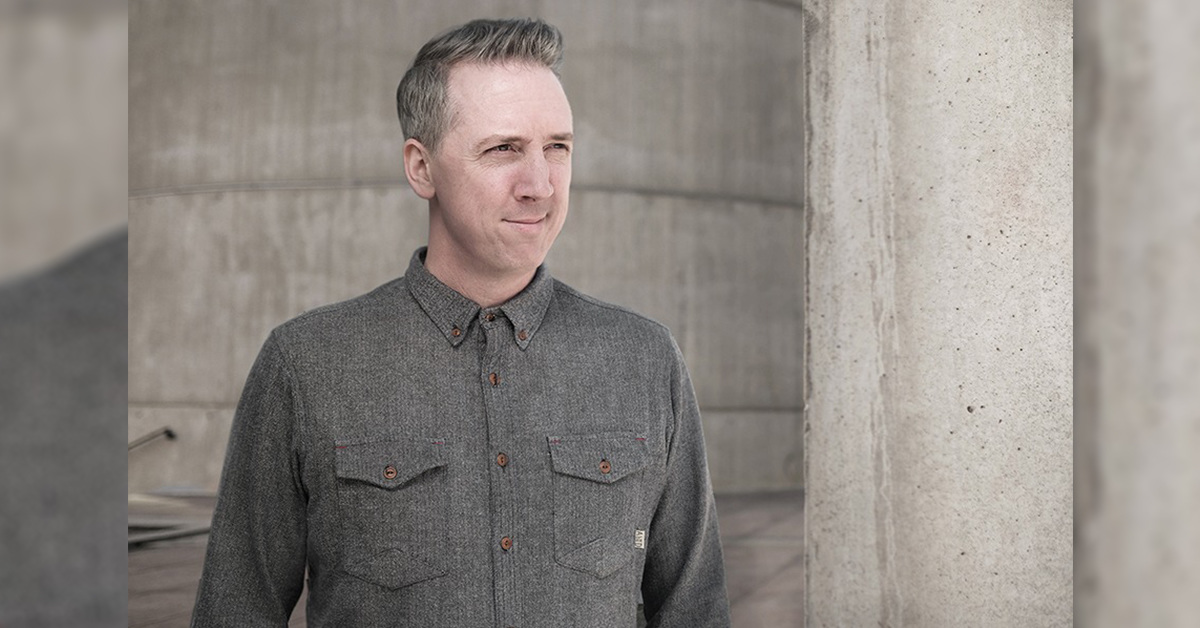.jpg)
The Making of the New Balance 1978 - Interview with Global Design Director Brad Lacey
You can see how this completely "Made in the USA" model is made in the factory tour here. And for some additional insight, we sat down for an exclusive interview with Brad Lacey, New Balance's Global Design Director.
Brad, let's get right into it. Why was the 1978 project special to you?
It was a personal thing for me, that's right. The whole Made in USA thing was a big reason why I came to New Balance. Even though I've been designing shoes for twenty years, I've never had the opportunity to work on a real sneaker line. In no factory can you just sit down and start making shoes, but at New Balance it's part of the company culture. So the first time I made a shoe myself was a kind of spiritual experience for me.
Brad, let's get right into it. Why was the 1978 project special to you?
It was a personal thing for me, that's right. The whole Made in USA thing was a big reason why I came to New Balance. Even though I've been designing shoes for twenty years, I've never had the opportunity to work on a real sneaker line. In no factory can you just sit down and start making shoes, but at New Balance it's part of the company culture. So the first time I made a shoe myself was a kind of spiritual experience for me.
.jpg)
The factory in Norridgewock is one of the largest in the USA and a true benchmark for quality manufacturing.
One of the buzzwords here is "designer manufactory", can you explain that a bit more?
That got me thinking: this is so extremely complicated, how can we rethink this? So we started thinking about what we call "designer manufacturing" - designing a product specifically for the way we manufacture today.
The shoe is also about a great heritage, of course. Did you do a lot of research before you started?
I started the so-called "Origins Project" to understand the company better. That took about six months, and the good thing about New Balance is that a lot of the people who originally worked on those projects are still with the company, like Ken Graham, the original developer of the 990. I started talking to him, and honestly, he's a fun guy anyway! But when he told me about his work on the shoe, I got more and more interested in the original 990 and what it was all about.
That got me thinking: this is so extremely complicated, how can we rethink this? So we started thinking about what we call "designer manufacturing" - designing a product specifically for the way we manufacture today.
The shoe is also about a great heritage, of course. Did you do a lot of research before you started?
I started the so-called "Origins Project" to understand the company better. That took about six months, and the good thing about New Balance is that a lot of the people who originally worked on those projects are still with the company, like Ken Graham, the original developer of the 990. I started talking to him, and honestly, he's a fun guy anyway! But when he told me about his work on the shoe, I got more and more interested in the original 990 and what it was all about.
.jpg)
If it's based on the 990 that came out in 1982, why is it called 1978?
There's this advert from '82 - some of you have probably seen it. It says: "On a scale of 1,000, New Balance is a 990". That's how the story started, that they started working on this shoe in the spring of 1978 and the idea was that there were no limits. They didn't care what it cost to make; they just cared about creating the most technically advanced shoe they could. It took them four years to do it. So I didn't want to take four years, but I wanted to think that way.
There's this advert from '82 - some of you have probably seen it. It says: "On a scale of 1,000, New Balance is a 990". That's how the story started, that they started working on this shoe in the spring of 1978 and the idea was that there were no limits. They didn't care what it cost to make; they just cared about creating the most technically advanced shoe they could. It took them four years to do it. So I didn't want to take four years, but I wanted to think that way.
.jpg)
Besides the sole collaboration with Vibram that we talked about, you also mentioned that you reduced the number of parts ...
So, I just started thinking ... what could I eliminate? What could I rethink? What could I simplify somehow? And that's what led to the design, really thinking about how few parts can be put together. That requires a different kind of craftsmanship. Details become super important. It's really important to understand how the shoe is cut and how the leathers fit together when something is so simple.
Is there an explanation for why the perforation patterns look the way they do?
We looked at this new technology called C&C Cutting, where you can do these really intricate patterns. So the pattern engineer and I started playing with it and trying out different sizes of patterns. That's what gave us this shape.
So, I just started thinking ... what could I eliminate? What could I rethink? What could I simplify somehow? And that's what led to the design, really thinking about how few parts can be put together. That requires a different kind of craftsmanship. Details become super important. It's really important to understand how the shoe is cut and how the leathers fit together when something is so simple.
Is there an explanation for why the perforation patterns look the way they do?
We looked at this new technology called C&C Cutting, where you can do these really intricate patterns. So the pattern engineer and I started playing with it and trying out different sizes of patterns. That's what gave us this shape.
.jpg)
Are you satisfied with the result?
Definitely. I think one reason we're doing this is because we wanted to learn more about what's possible. New Balance factories have been amazingly consistent over such a long period of time in making the kind of shoes we're known for. But we wanted to see how far we could go with modern construction.
Definitely. I think one reason we're doing this is because we wanted to learn more about what's possible. New Balance factories have been amazingly consistent over such a long period of time in making the kind of shoes we're known for. But we wanted to see how far we could go with modern construction.
.jpg)
.jpg)
.jpg)

.jpg)

.jpg)
.jpg)

.jpg)